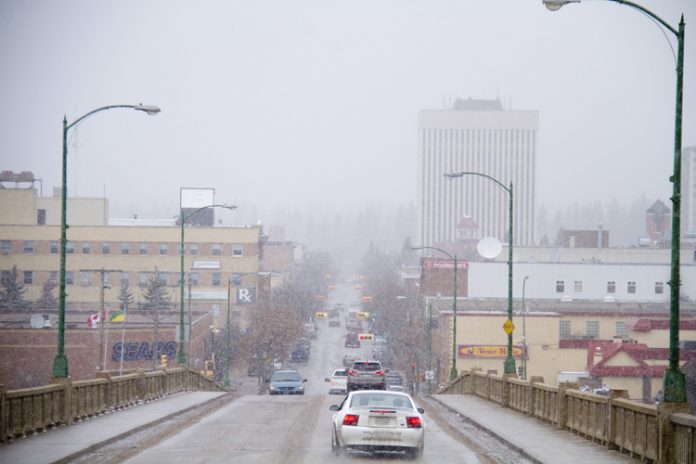There’s a five-digit number that means a lot for Prince Albert, a number that Jim Toye, our city manager, has been waiting for. He knows that hundreds of thousands in federal and provincial dollars hinge on it. Until Wednesday morning, at 8:30 sharp, it was a mystery.
That number is 35,926, and it’s now the official population of Prince Albert.
Statistics Canada published the first instalment of 2016 census data on Wednesday, including population and dwelling counts. The census recorded a 2.3 per cent increase in Prince Albert’s population, up from the 35,129 reported in the 2011 census.
Toye said Prince Albert’s population figure has a direct impact on how much the city gets from two major funding sources: the province’s revenue sharing agreement and the federal gas tax fund.
“We hope our population shows that we are above the average growth in Saskatchewan,” he said the day before the release.
He noted that the result “could mean hundreds of thousands of dollars for us.”
Prince Albert, it turns out, didn’t keep pace with the rest of the province. Saskatchewan saw a 6.3 per cent bump, growing from 1,033,381 to 1,098,352 residents.
Canada as a whole is now home to 35,151,728 people.
According to Saskatchewan’s municipal revenue sharing agreement, the government transfers the equivalent of one percentage point of PST revenue to cities, towns and rural municipalities across the province. To calculate the amount each one gets, the government multiplies their population by a set figure: currently $218.39 for cities. For Prince Albert, that meant just under $7.7 million.
Until now, the province has relied on the 2011 census. But the new data shows Prince Albert lagging the rest of the province in population growth, so we might see a smaller share of that pie.
Ottawa also sends a regular cash stream to Prince Albert: the federal gas tax fund, which helps pay for infrastructure projects.
The amount Saskatchewan gets depends on population. The province then distributes the federal money to each municipality, again using census data to divvy it up. Beyond the 2018-19 year, both steps will use 2016 census data.
Prince Albert’s leaders have long known how important this day would be, and they prepared for it. During census time last year, Toye heard reports that Prince Albert residents were filling out their forms at alarmingly low rates.
“Over 30 per cent of our population did not fill out the appropriate form,” he said. “We made sure we delivered door to door notices.”
The city even threw a barbecue. They brought in census workers to help people fill in their forms while they ate.
In the end, Toye estimates, they exceeded a 90 per cent response rate – perhaps as high as 98 per cent.
Coun. Ted Zurakowski has also been awaiting the Statistics Canada release. He said that population data is a weapon the city can wield in every grant proposal it sends to Ottawa or Regina.
“I think with other levels of government you now require data and information to make an argument,” he said.
Toye and Zurakowski will also keep an eye open for upcoming census releases, including the city’s age profile. That information, they suggested, could help them decide whether the city needs more playgrounds, or more seniors’ residences instead.
For more on this story, please see the Feb. 9 print or e-edition of the Daily Herald.


